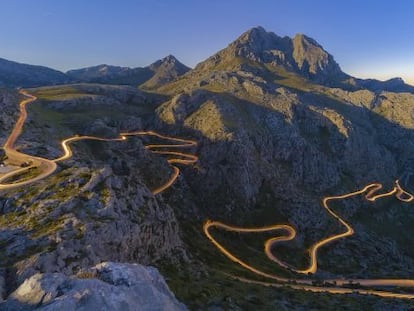Ten beaches where you can best enjoy Spain’s Indian summer
Out of season, September and October can be the best time for a Mediterranean seaside break
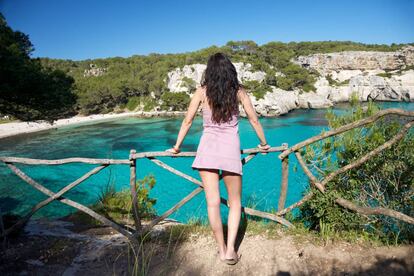
The kids are back at school, the tourists have returned to work, and Spain’s beaches are suddenly deserted. This is when the smart set, who have kept a few days aside from their summer vacations, head down to the Mediterranean, where the water is still warm and the temperatures ideal. The hotels have lowered their prices, the parking’s easy, and there’s no problem finding a table at that famed restaurant. Relax. Enjoy. But don’t leave it too long.
1 The families have all gone
Playa del norte (Peñiscola, Castellón)
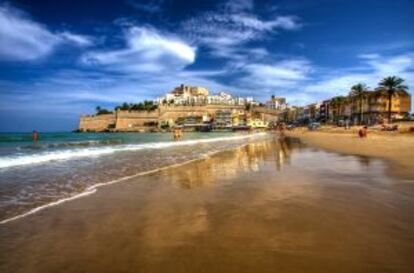
Come fall, Peñiscola settles down: in recent years this already popular destination has seen visitor numbers rise even further due to its appearance on Game of Thrones. The northern beach offers one of the best vistas of Spain’s Mediterranean coastline, dominated by the rocky outcrop that hosts the 15th-century castle built by Spanish antipope Papa Luna. Just as impressive is the fact that there are no long lines to sample the spectacular arroz Calabuig in Can Jaime, one of the town’s best restaurants.
2 Alone at last (well, almost)
Bahía de los Genoveses (Cabo de Gata, Almería)

Out of season, the visitor number restrictions here are not an issue, so we highly recommend paying homage to this outstanding, unspoiled cove in the Cabo de Gata-Níjar natural park. “October is the perfect month here. The light and the autumn colors, especially after a light rain, are exceptional,” says Emilio Roldán del Valle. Close by is a naturist beach.
3 Fifty shades of blue
Ses Illetes (Formentera)
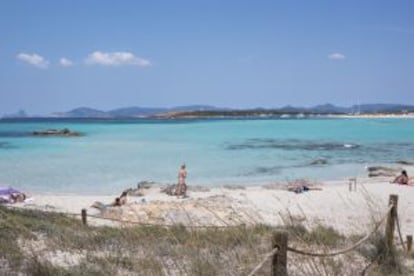
“One summer, I counted a thousand yachts,” says a veteran sailor about this spectacular island. He may have been exaggerating, but the silky white sands of this nature reserve are best when free of boats. Its privacy invites stripping off, especially amid the protection of the dunes, and then enjoying the impossibly blue waters. Access is best by public transport, and let’s not forget that this is a protected area: the Salinas de Ibiza and Formentera.
4 A riot of color
Aiguablava (Begur, Girona)
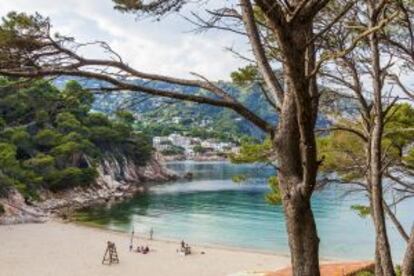
This delightful spot, tucked away in the bay of Fornells, just 80 meters long and 40 meters deep, is protected from the chill winds of the tramontana by nearby Cape Begur. Aside from the ever-deepening reds and oranges of the woodland behind it, Aiguablava hosts the wonderful Toc el Mar, whose legendary paellas must be booked ahead. If you’re looking for a touch of luxury, stay at the idyllically located Parador de Aiguablava.
5 The Moors are coming!
Arenal-Bol (Calpe, Alicante)
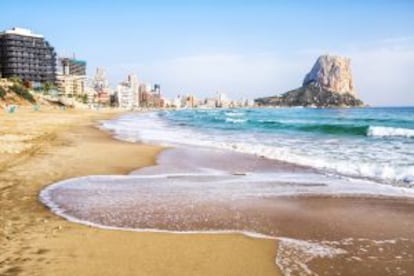
One of the most popular beaches along this stretch of the Alicante coastline, Arenal-Bo is at its best when the crowds have gone, allowing visitors to park free of charge and enjoy its golden sands, with views of the Gibraltar-like Peñón de Ifach, and taking in the archeological site. It is also the setting for the local Moros y Cristianos fiesta on October 15, an excuse for townspeople to dress up as Arab invaders and Spanish defenders and parade, before joining battle the next day on the sands.
6 Calas virales
Macarella and Macarelleta (Ciudadela, Menorca)

Considered by many to be the jewels in the crown of Spanish beaches, the popularity of these spectacular spots, just a few minutes drive from Menorca’s second city of Ciudadela, means that the only chance of enjoying them in relative peace is in the fall. Leaving the car or bike by the Hotel Audax in Cala Galdana, access to these pristine beaches is on foot. The holm oaks and pines hang over the turquoise waters, beneath which lie pure white sands. Until October 20 it’s possible to eat at the Susi beach bar (34 971 35 94 67), opened in 1971, when this place was like something out of the Garden of Eden.
7 Relax among the scuba divers
La Rijana (Castell de Ferro, Granada)
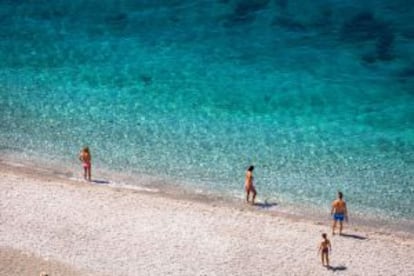
A short hop from Motril, this rocky beach tumbles down from the Lújar hills into crystal-clear water dotted with tiny rocky islets. As a result, it’s very popular with divers at all times of the year, attracted by its unique underwater ecosystem. Aside from a ruined castle tower, the hand of man is spectacularly absent. If you’re driving from the town of Calahonda, it’s forbidden to turn into the car park: you have to continue a kilometer on to a turning point. The best place to eat is La Ventera.
8 A steep drop
Cala de Moraig (Benitatxell, Alicante)
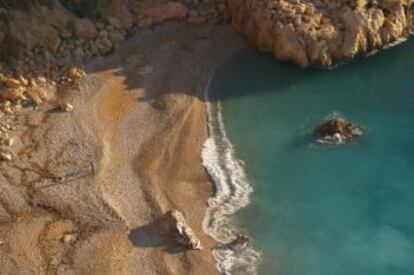
The water here is calmer in September than it is in August, say the locals of this man-made beach that sits below a spectacular cliff. The highly recommended La Cumbre restaurant is also a lot calmer, and its €18 menu is worth a look over. Private vehicles are not permitted down the one-in-five slope, which means a longish walk is the only option down to the beach. But it’s worth it. Try a cocktail at the Cocoro Beach Club.
9 Graves’s secret
Cala de Deià (Mallorca)
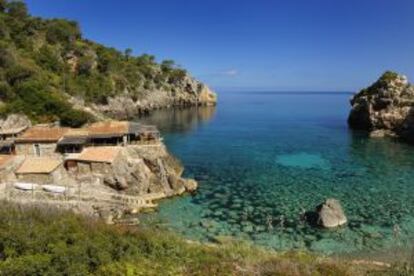
Crowded in summer, this delightful cove is located at the foot of the Tramuntana hills, around 10 kilometers north of Palma de Mallorca. It’s a lot easier getting down to the rocky beach than it was in the days when I Claudius author Robert Graves used to take his daily swim here, and it’s also possible to park nearby in the fall, even if you do have to pay for the privilege. Given the rocky terrain, it’s advisable to visit before the late afternoon. There’s a splendid rock a few meters out that has to be dived off.
10 Urban and yet quiet
Cala Cortina (Cartagena, Murcia)
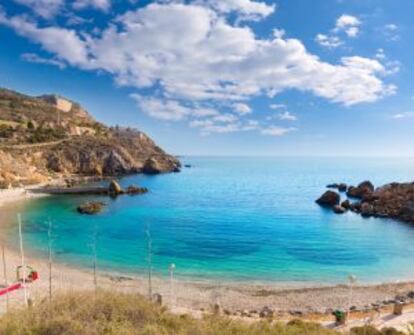
If you’re in search of the perfect Spanish beach, put this on your list. Many visitors make the trek by foot from the nearby town of Cartagena, setting up camp on its thick sand that slopes gently down into the welcoming shallow azure waters. When the only restaurant here is closed, there are very few people here, and most of them are snorkeling.
English version by Nick Lyne.
Tu suscripción se está usando en otro dispositivo
¿Quieres añadir otro usuario a tu suscripción?
Si continúas leyendo en este dispositivo, no se podrá leer en el otro.
FlechaTu suscripción se está usando en otro dispositivo y solo puedes acceder a EL PAÍS desde un dispositivo a la vez.
Si quieres compartir tu cuenta, cambia tu suscripción a la modalidad Premium, así podrás añadir otro usuario. Cada uno accederá con su propia cuenta de email, lo que os permitirá personalizar vuestra experiencia en EL PAÍS.
¿Tienes una suscripción de empresa? Accede aquí para contratar más cuentas.
En el caso de no saber quién está usando tu cuenta, te recomendamos cambiar tu contraseña aquí.
Si decides continuar compartiendo tu cuenta, este mensaje se mostrará en tu dispositivo y en el de la otra persona que está usando tu cuenta de forma indefinida, afectando a tu experiencia de lectura. Puedes consultar aquí los términos y condiciones de la suscripción digital.

